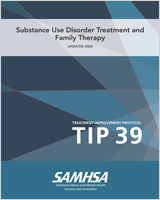Figure 3-1 Overview of Key Elements for Inclusion in Assessment
Standard Medical History and Physical Exam, With Particular
Attention to the Presence of Any of the Following
Physical signs or complaints (e.g., nicotine stains,
dilated or constricted pupils, needle track marks,
unsteady gait, tattoos that designate gang affiliation,
“nodding off”)
Neurological signs or symptoms (e.g., blackouts or other
periods of memory loss, insomnia or other sleep
disturbances, tremors)
Emotional or communicative difficulties (e.g., slurred,
incoherent, or too rapid speech; agitation; difficulty
following conversation or sticking to the point)
Skinner Trauma History
Since your 18th birthday, have you
Had any fractures or dislocations to your bones or
joints?
Been injured in a road traffic accident?
Injured your head?
Been injured in an assault or fight (excluding injuries
during sports)?
Been injured after drinking? Source:
Skinner et al. 1984.
Alcohol and Drug Use History
Use of alcohol and drugs (begin with legal drugs
first)
Mode of use with drugs (e.g., smoking, snorting,
inhaling, chewing, injecting)
Quantity used
Frequency of use
Pattern of use: date of last drink or drug used, duration
of sobriety, longest abstinence from substance of choice
(when did it end?)
Alcohol/drug combinations used
Legal complications or consequences of drug use (selling,
trafficking)
Craving (as manifested in dreams, thoughts, desires)
Family/Social History
Marital/cohabiting status
Legal status (minor, in custody, immigration status)
Alcohol or drug use by parents, siblings, relatives,
children, spouse/partner (probe for type of alcohol or
drug use by family members since this is frequently an
important problem indicator: “Would you say they had a
drinking problem? Can you tell me something about
it?”)
Alienation from family
Alcohol or drug use by friends
Domestic violence history, child abuse, battering (many
survivors and perpetrators of violence abuse drugs and
alcohol)
Other abuse history (physical, emotional, verbal,
sexual)
Educational level
Occupation/work history (probe for sources of financial
support that may be linked to addiction or drug‐related
activities such as participation in commercial sex
industry)
Interruptions in work or school history (ask for
explanation)
Arrest/citation history (e.g., DUI [driving under the
influence], legal infractions, incarceration,
probation)
Sexual History: Sample Questions and Considerations
Sexual orientation/preference—“Are your sexual partners
of the same sex? Opposite sex? Both?”
Number of relationships—“How many sex partners have you
had within the past 6 months? Year?”
Types of sexual activity engaged in; problems with
interest, performance, or satisfaction—“Do you have any
problems feeling sexually excited? Achieving orgasm? Are
you worried about your sexual functioning? Your ability
to function as a spouse or partner? Do you think drugs
or alcohol are affecting your sex life?” (A variety of
drugs may be used or abused in efforts to improve sexual
performance and increase sexual satisfaction; likewise,
prescription and illicit drug use and alcohol use can
diminish libido, sexual performance, and achievement of
orgasm.)
Whether the patient practices safe sex (research
indicates that substance abuse is linked with unsafe
sexual practices and exposure to HIV).
Women’s reproductive health history/pregnancy outcomes
(in addition to obtaining information, this item offers
an opportunity to provide some counseling about the
effects of alcohol and drugs on fetal and maternal
health).
Mental Health History: Sample Questions and Considerations
Mood disorders—“Have you ever felt depressed or anxious
or suffered from panic attacks? How long did these
feelings last? Does anyone else in your family
experience similar problems?” (If yes, do they receive
medication for it?)
Other mental disorders—“Have you ever been treated by a
psychiatrist, psychologist, or other mental health
professional? Has anyone in your family been treated?
Can you tell me what they were treated for? Were they
given medication?”
Self‐destructive or suicidal thoughts or actions—“Have
you ever thought about committing suicide?” (If yes:
“Have you ever made an attempt to kill yourself? Have
you been thinking about suicide recently? Do you have a
plan?” [If yes, “What means would you use?”] Depending
on the patient’s response and the clinician’s judgment,
a mental health assessment tool such as the Beck
Depression Inventory or the Beck Hopelessness Scale may
be used to obtain additional information, or the
clinician may opt to implement his own predefined
procedures for addressing potentially serious mental
health issues.)
Source: CSAT 1997a.
